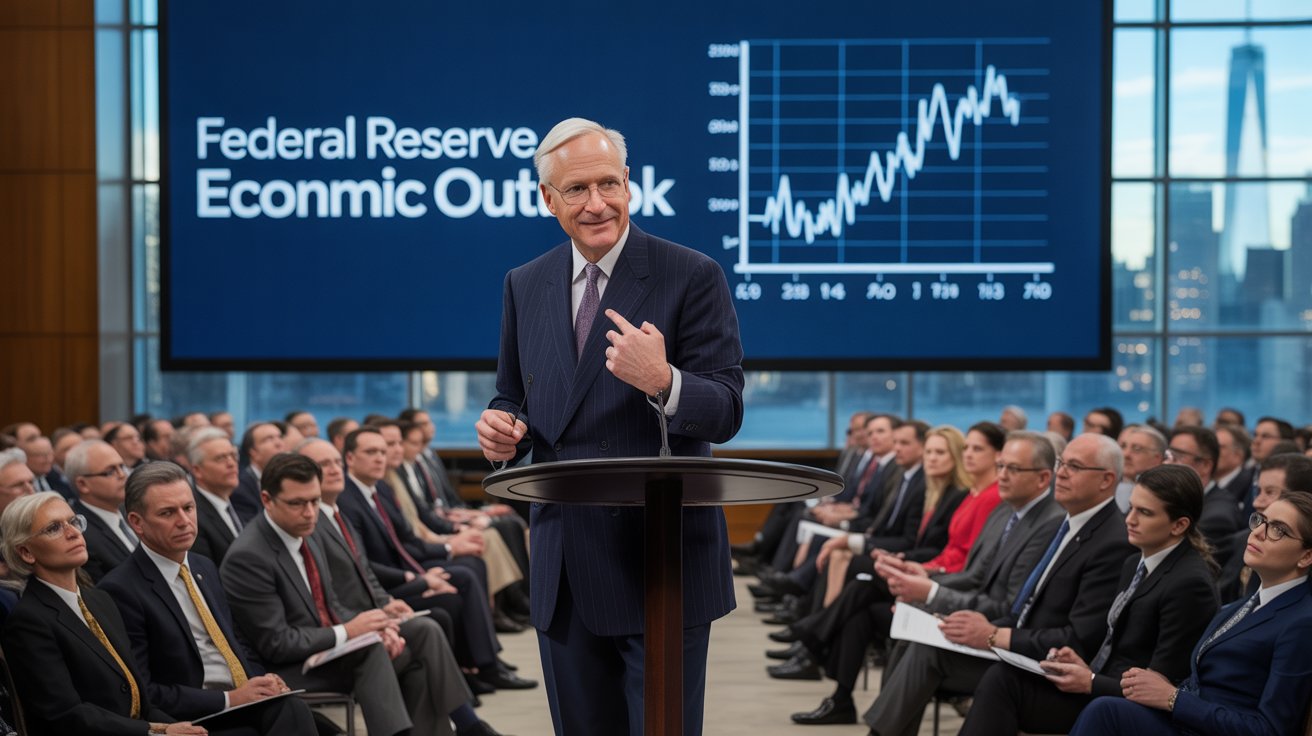
When John Williams, President of the Federal Reserve Bank of New York, speaks, Wall Street listens. His latest remarks highlight a theme that resonates deeply with global markets in 2025: constant unpredictability is the new normal.
Williams stressed that unexpected changes will remain a structural reality for central banks. He urged policymakers to maintain robust, flexible tools to respond quickly to shocks — whether from inflation swings, technological disruptions, or geopolitical crises.
For investors and businesses, this warning means one thing: prepare for volatility, don’t expect stability.
Why Central Banks Face a New Era of Uncertainty
Historically, central banks aimed to provide predictability. Consistent communication, gradual interest rate adjustments, and forward guidance were tools to reassure markets. But the last few years — from the pandemic to inflation shocks to AI disruptions — have shown that the old playbook no longer works.
Key Drivers of Unpredictability:
- Geopolitical Risks – Ongoing conflicts and shifting trade alliances disrupt supply chains.
- Inflation Volatility – Prices are no longer as stable as pre-2020, with food, energy, and housing costs swinging sharply.
- Technological Shocks – AI adoption, cybersecurity threats, and digital currencies change economic structures faster than policy can adapt.
- Climate and Natural Events – Extreme weather events affect energy, food supply, and insurance markets.
Central banks must navigate these shocks with tools that are flexible, fast, and adaptable.
What “Robust and Adaptive Tools” Mean in Practice
Williams emphasized that central banks must not only hold traditional tools like interest rate adjustments and quantitative easing, but also explore new frameworks.
Examples of Adaptive Central Bank Tools:
- Flexible Interest Rate Policy – Rapid shifts in policy when inflation or unemployment data surprises.
- Balance Sheet Tools – Using asset purchases or sales to stabilize liquidity.
- Digital Infrastructure – Exploring central bank digital currencies (CBDCs) to strengthen monetary control.
- Crisis Communication – Clear, rapid messaging to avoid panic during shocks.
For investors, this means policy direction will be less predictable, more reactive — and markets must adjust quickly.
Implications for Investors: Navigating Constant Surprises
The Fed’s warning isn’t just academic — it has direct consequences for your money.
1. Expect Volatility in Interest Rates
Investors should prepare for more frequent and sharper rate changes. Long-term bonds, in particular, face higher risks when policy becomes unpredictable.
2. Stock Market Winners and Losers
- Winners: Companies with strong balance sheets, diversified global operations, and the ability to adapt to shocks.
- Losers: Highly leveraged firms or those dependent on cheap credit.
3. Currency and Commodity Swings
The U.S. dollar, gold, and oil could all see sharper price swings as central banks react quickly to surprises.
4. Opportunities in Flexibility
Assets with built-in adaptability (like floating-rate bonds or AI-driven ETFs) may outperform in this new environment.
The Fed’s Evolving Role in a World of Shocks
Williams’ comments suggest the Fed is embracing a more pragmatic, less rigid philosophy. Instead of trying to project stability at all costs, it will prioritize responsiveness to real-time conditions.
A Shift in Central Banking Philosophy
- Old Model: Forward guidance, gradual policy adjustments, predictability.
- New Model: Flexibility, readiness to pivot, resilience against shocks.
This shift acknowledges a reality investors already see: markets change faster than forecasts.
How Global Central Banks Are Responding
The U.S. is not alone. Central banks worldwide are facing similar challenges:
- European Central Bank (ECB): Struggling with energy-driven inflation and weak growth.
- Bank of England: Navigating post-Brexit trade issues and persistent inflation.
- Bank of Japan: Shifting away from decades of ultra-loose policy amid wage growth.
- Emerging Market Banks: Dealing with capital flight risks and currency instability.
The global theme: adapt or fall behind.
Risks of Constant Unpredictability
While flexibility is critical, there are also risks:
- Market Overreaction – If central banks pivot too often, investors may panic, amplifying volatility.
- Credibility Erosion – Unpredictable moves could undermine trust in monetary authorities.
- Policy Mistakes – Acting too fast without full data risks unintended consequences.
This is why clear communication remains essential even in a world of shocks.
Investor Playbook: Thriving Amid Uncertainty
For individual and institutional investors, success depends on preparing portfolios for volatility.
Practical Steps:
- Diversify Broadly – Across equities, bonds, commodities, and geographies.
- Stay Liquid – Keep cash reserves for unexpected opportunities.
- Use Hedging Tools – Options, futures, or inverse ETFs can offset downside risks.
- Focus on Quality – Strong, resilient companies outperform in volatile environments.
- Adopt a Long-Term Lens – Don’t overreact to every short-term shock.
Expert Voices on Williams’ Warning
- Economists: “This is an acknowledgment that uncertainty is structural, not temporary.”
- Investors: “Volatility is not going away — it’s becoming the baseline.”
- Policy Analysts: “Central banks must strike a balance between flexibility and credibility.”
Conclusion: A World Where Change Is the Only Constant
John Williams’ warning is not just a speech — it’s a roadmap for the next era of monetary policy. The age of stability and predictability is gone. In its place, central banks — and investors — must embrace adaptability as the core strategy.
For markets, this means the days of smooth, predictable cycles are behind us. The winners of tomorrow will be those who understand that volatility is not a bug in the system — it is the system.
Federal Reserve 2025, John Williams Fed, Fed warns of unpredictability, central bank tools, interest rates 2025, stock market volatility Fed, monetary policy uncertainty, global central banks 2025, adaptive monetary tools, investing during volatility, Fed news today, Wall Street reaction Fed, how to invest during uncertainty, Federal Reserve speeches 2025, economic unpredictability 2025, Fed interest rates forecast, stock market strategy Fed policy, global financial markets 2025, central bank digital currencies, best investments 2025